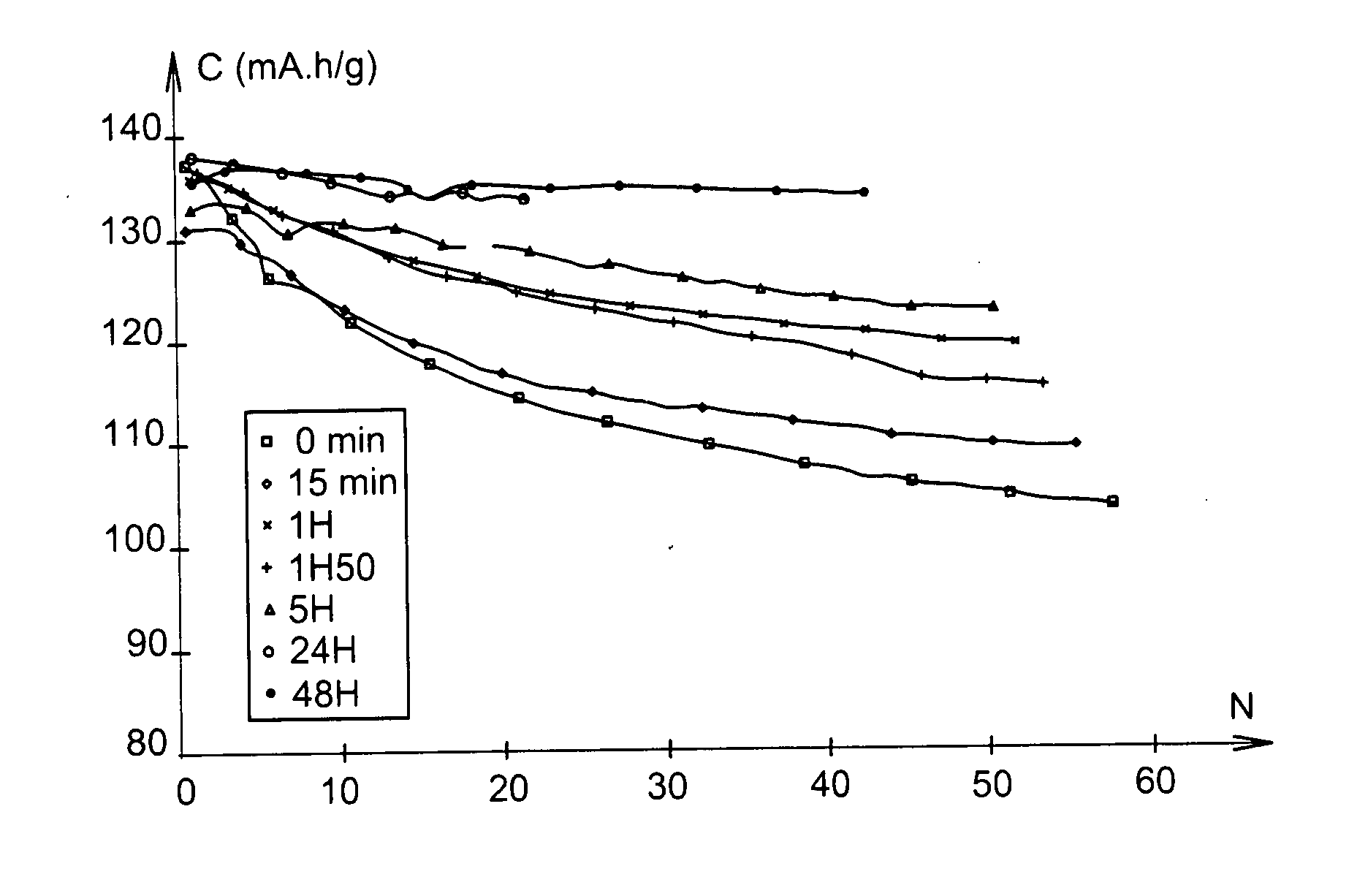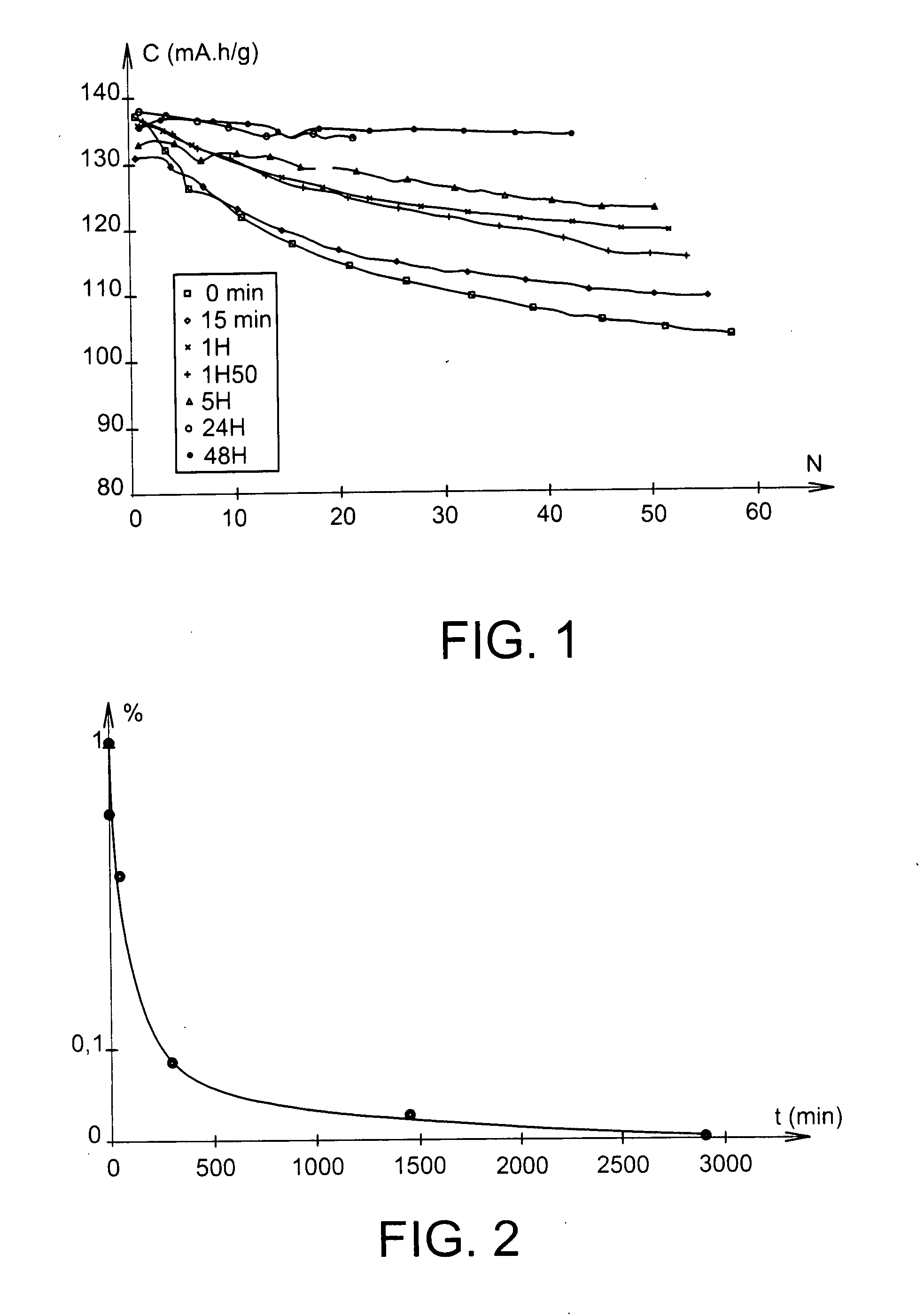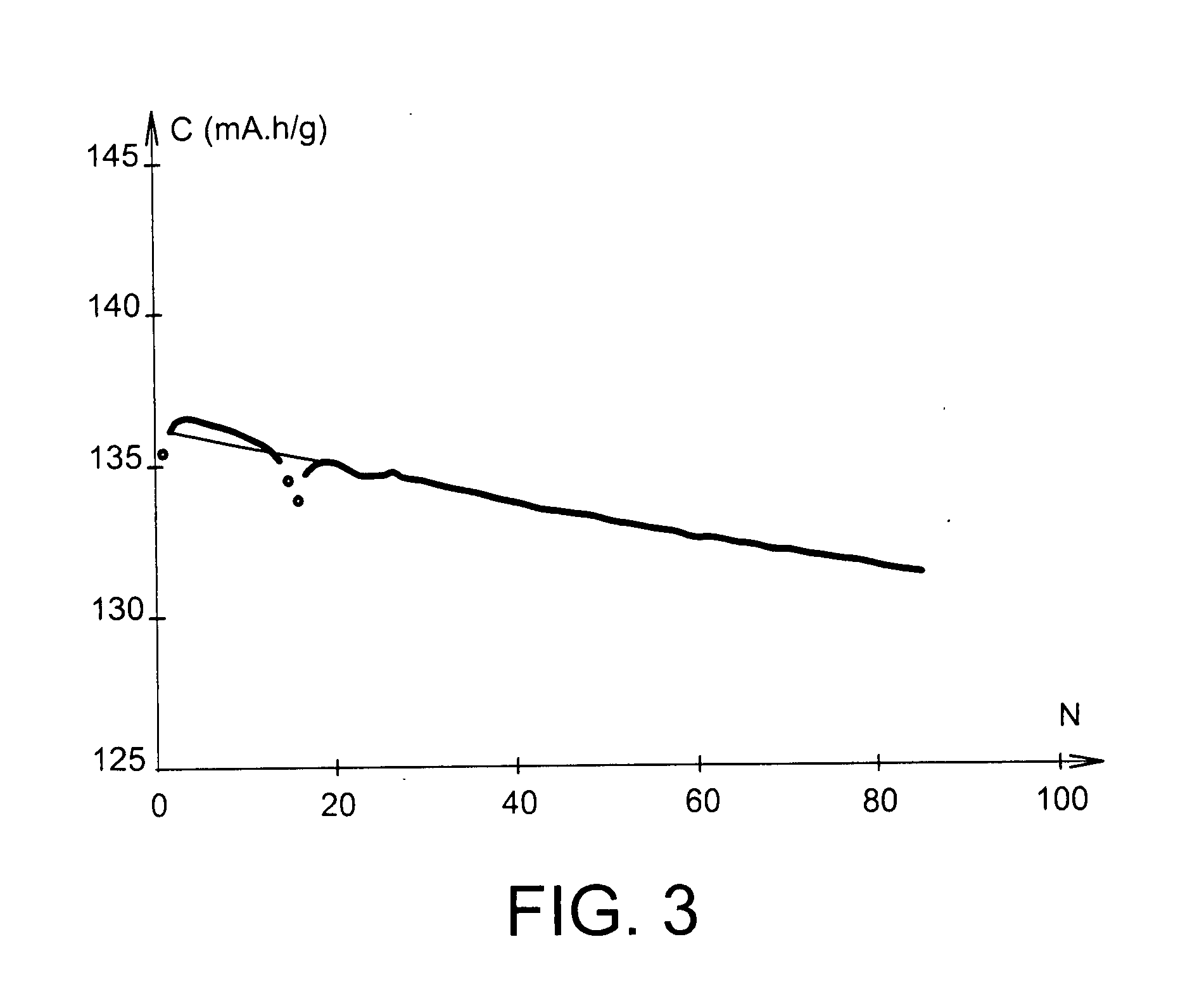Method of Modifying a Lithium-Based Oxide Comprising at Least One Transition Metal, Positive Electrode Comprising This Oxide, and Lithium Secondary Battery
a lithium-based oxide and positive electrode technology, applied in the direction of nickel compounds, cobalt compounds, inorganic chemistry, etc., can solve the problems of limited lifetime of secondary batteries, reduced discharge capacity, reduced capacity delivered by batteries, etc., to achieve low loss of discharge capacity, economic attractiveness, and long life
- Summary
- Abstract
- Description
- Claims
- Application Information
AI Technical Summary
Benefits of technology
Problems solved by technology
Method used
Image
Examples
example 1
[0065]LiNi0.5Mn1.5O4 was prepared by intimately mixing lithium carbonate, nickel carbonate and manganese carbonate, mixed in stoichiometric proportions, followed by a heat treatment (10 hours at 900° C.) and slow cooling (1° C. / min).
[0066]One gram of LiNi0.5Mn1.5O4 prepared beforehand was immersed in 50 ml of a 0.1M aqueous LiH2PO4 solution and stirred for 48 hours at room temperature. After centrifugation and successive rinsings with water and then with ethanol, the oxide was dried at 60° C. over a weekend. Finally, a heat treatment at 350° C. was carried out for three hours.
example 2
[0067]One gram of LiNi0.5Mn1.5O4 prepared beforehand at 900° C. was immersed in 50 ml of a 0.1M aqueous (NH4)2HPO4 solution and stirred for 24 hours at room temperature. After centrifugation and successive rinsings with water and then with ethanol, the oxide was dried at 60° C. over a weekend. Finally, a heat treatment at 350° C. was carried out for three hours.
example 3
[0068]The modified lithium-based transition metal oxide prepared in Example 1 was incorporated into a lithium-metal secondary battery comprising:[0069]a negative electrode consisting of a lithium disc (diameter: 16 mm; thickness: 130 microns) deposited on a nickel disc serving as current collection;[0070]a positive electrode consisting of a 14 mm diameter disc taken from a composite film 50 microns in thickness comprising the oxide of the invention prepared as in Example 1 (80% by weight), carbon black (8% by weight) as conducting material, and polyvinylidene hexafluoride (12% by weight) as binder, the combination being deposited on an aluminium current collector (foil 25 microns in thickness); and[0071]a separator imbibed with the LiPF6 liquid electrolyte as a 1M solution in propylene carbonate.
[0072]At 25° C., this battery delivered a capacity of 137 mAh / g, relatively stable under C / 5 cycling conditions, as Example 7 below demonstrates.
PUM
| Property | Measurement | Unit |
|---|---|---|
| time | aaaaa | aaaaa |
| specific surface area | aaaaa | aaaaa |
| particle size | aaaaa | aaaaa |
Abstract
Description
Claims
Application Information
 Login to View More
Login to View More - R&D
- Intellectual Property
- Life Sciences
- Materials
- Tech Scout
- Unparalleled Data Quality
- Higher Quality Content
- 60% Fewer Hallucinations
Browse by: Latest US Patents, China's latest patents, Technical Efficacy Thesaurus, Application Domain, Technology Topic, Popular Technical Reports.
© 2025 PatSnap. All rights reserved.Legal|Privacy policy|Modern Slavery Act Transparency Statement|Sitemap|About US| Contact US: help@patsnap.com



